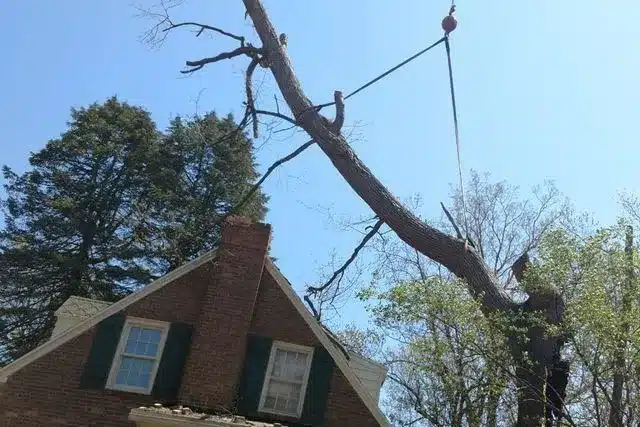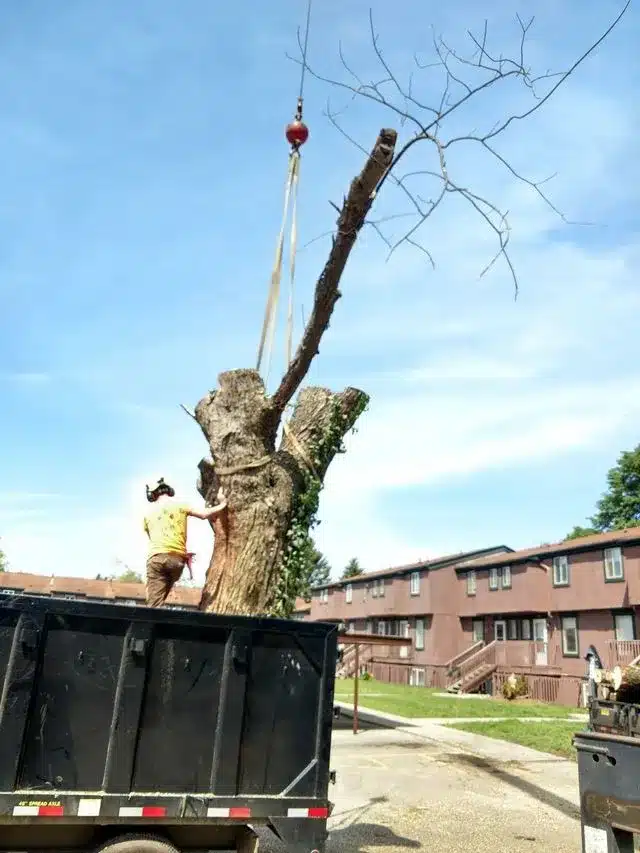At Lou’s Cutting Edge Tree Removal, we offer crane assisted tree removal services for Lansing and surrounding areas. We understand that some trees are too difficult to remove safely and efficiently with traditional methods and that is where our crane services come into play. With the use of a crane, we can remove large, stubborn trees with ease and minimal disruption to the area.
We offer a comprehensive crane assisted removal service with certified personnel, fully licensed and insured, and the latest machinery. We know how to safely and efficiently operate crane removal services, drastically reducing the risk and cost associated with the removal process. We provide a clear and accurate description of the scope of work and never surprise you with hidden costs.
If you are in the Lansing area and are in need of crane assisted tree removal, contact us today at (517) 231-8180. Our team of certified personnel will be happy to assist with your tree removal needs and offer the highest level of quality and service. With our crane assisted removal process, you can rest assured knowing that your trees will be removed safely and efficiently with minimal disruption to the area.
In order to ensure optimal results from crane assisted tree removal, it is important to properly set up the crane. This includes placing the crane on a stable, level surface that is clear of debris. It is also important to make sure the crane is properly counterweighted to help ensure balanced stability. Furthermore, make sure the crane has secure footing on the ground, especially since it will be lifting extra large, heavy objects. Lastly, make sure the crane is in the correct position for the job, including having sufficient reach and a proper boom angle. By following these steps, the crane is successfully set up to properly assist in tree removal.

Identifying problematic trees that require crane assisted removal can be challenging, but it is essential to ensure safety and mitigate damage to surrounding structures and people. Generally, a tree that is too large, diseased, dead, or leaning excessively is considered problematic and requires professional evaluation to determine the best removal technique.
One of the most common indications of a problematic tree is a noticeable lean towards a structure or a prevalent structural defect. A tree with multiple trunks, weak branches, or decayed roots can easily topple over and cause severe damage. Additionally, the tree may exhibit warning signs such as cracks, holes, or dead branches that signal internal decay and instability.
Another sign to watch out for is the tree’s proximity to power lines, building structures, and roads. A tree that poses a risk of falling on power lines or obstructing traffic requires urgent removal to prevent accidents and outages. Moreover, trees with extensive root systems that interfere with plumbing, drainage systems, or foundations may require cranes to extract them without causing significant damage.
Overall, it is essential to seek professional help when identifying problematic trees to ensure proper removal techniques, minimize damage, and keep everyone safe. With the expert help from Lou’s Cutting Edge Tree Service LLC, homeowners can identify problematic trees early and ensure that they receive the necessary care before they become a hazard.
